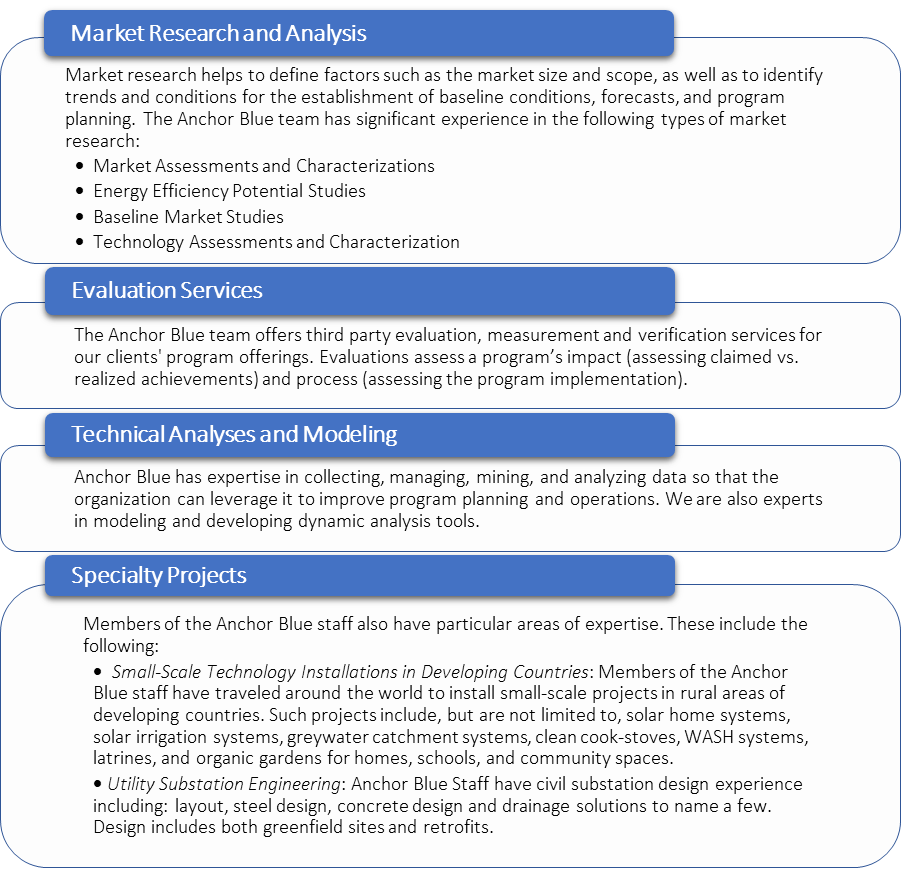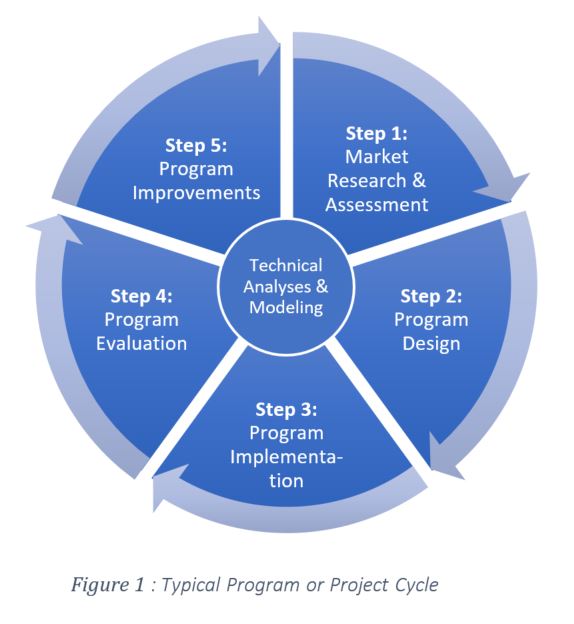Anchor Blue, LLC – Who We Are and What We Do:
Anchor Blue LLC is a woman-owned environmental consulting firm specializing in services related to energy efficiency, renewable energy, and sustainable development, both within the United States and abroad. We offer a broad spectrum of solutions to utilities, government agencies, municipal governments, and non-profit clients to help them design, implement, and evaluate their programs and projects in an effective and efficient manner. The Anchor Blue team collectively has over 30 years of experience in the energy efficiency industry and 10 years working with sustainable development non-profits, resulting in our multi-faceted solution offerings across varying project types. Though our primary market relates to organizations working in the energy field, our service offerings can be adapted to suit any market, as the principles and practices are transferable beyond the energy industry. Below is a list of some of our key areas of expertise:

Energy Efficiency Program Cycles and Consulting Services:
The Anchor Blue Team is dedicated to providing a broad spectrum of innovative and effective consulting services to organizations as they design and implement programs and projects. Typically, a program will be carried out from inception to evaluation over the course of five general steps. This process, which we refer to here as the ‘Program Cycle,’ is illustrated in figure 1 below. While Anchor Blue staff have experience in each of these steps, we specialize in Step 1: Market Assessments and Step 4: Program Evaluation. We also have extensive experience in technical analysis and modeling, which can be a core function of all of the steps. This section explains each component in further detail. The remainder of the document describes Anchor Blue’s areas of expertise in this process.
 Step 1 – Market Research and Assessments: For a program to be successful, organizations must have a full understanding of the market in which they will implement the program. Market assessments help to define factors such as the market size and scope, as well as to identify trends and conditions for the establishment of baselines, energy efficiency potential forecasts, and program planning.
Step 1 – Market Research and Assessments: For a program to be successful, organizations must have a full understanding of the market in which they will implement the program. Market assessments help to define factors such as the market size and scope, as well as to identify trends and conditions for the establishment of baselines, energy efficiency potential forecasts, and program planning.
Step 2 – Program Design: Once they understand their target market, organizations can design the scope of their program, the implementation strategy, and the tracking requirements needed to achieve program goals and objectives.
Step 3 – Program Implementation: After a program has been designed, organizations will take measured steps to roll out their program over a predetermined period of time. During this process, it is essential to maintain high-quality tracking documentation around performance and implementation. If the data is well collected and maintained, it will be substantially easier to evaluate the success of the program and make improvements for the future.
Step 4 – Program Evaluation: Evaluations are critical for determining the overall effectiveness of a program. These evaluations help to highlight successes and identify areas for future improvements. This step can be done in-house; however, independent, third-party evaluations can provide increased objectivity and alternate vantage points. Some funders or regulators require evaluations to be conducted by third parties to ensure objective and transparent assessments.
Step 5 – Program Improvements and Re-Implementation: Organizations employ the insights and recommendations from evaluations to improve the program design and implementation strategies. The calculated incorporation of these recommendations allows organizations to achieve more effective and efficient results upon re-implementation.
Anchor Blue Members have extensive experiences within many of these energy efficiency program cycle elements, discussed in further detail in this document
